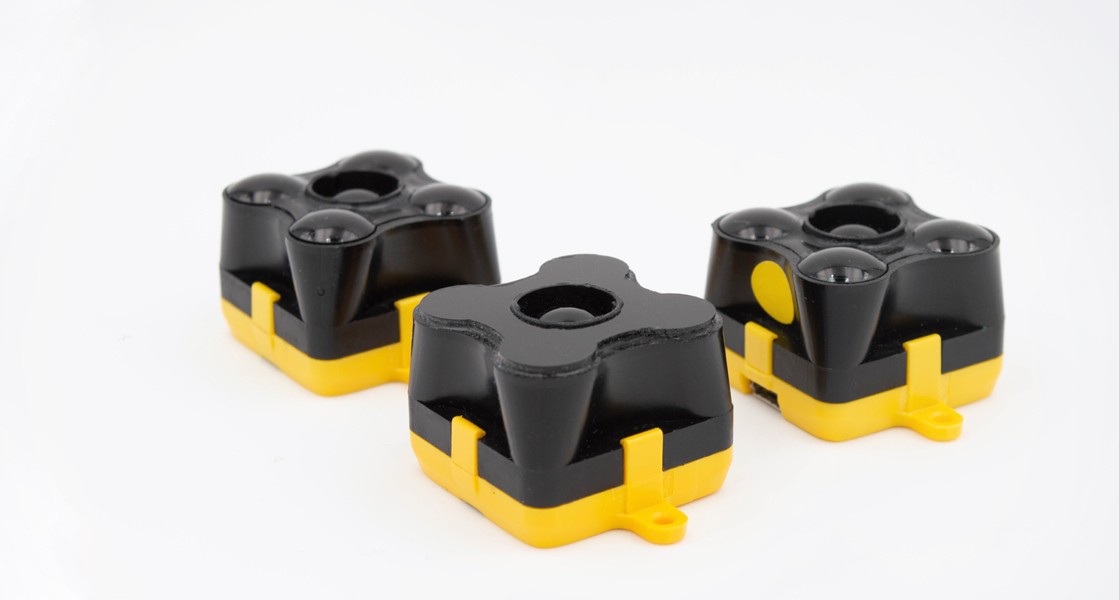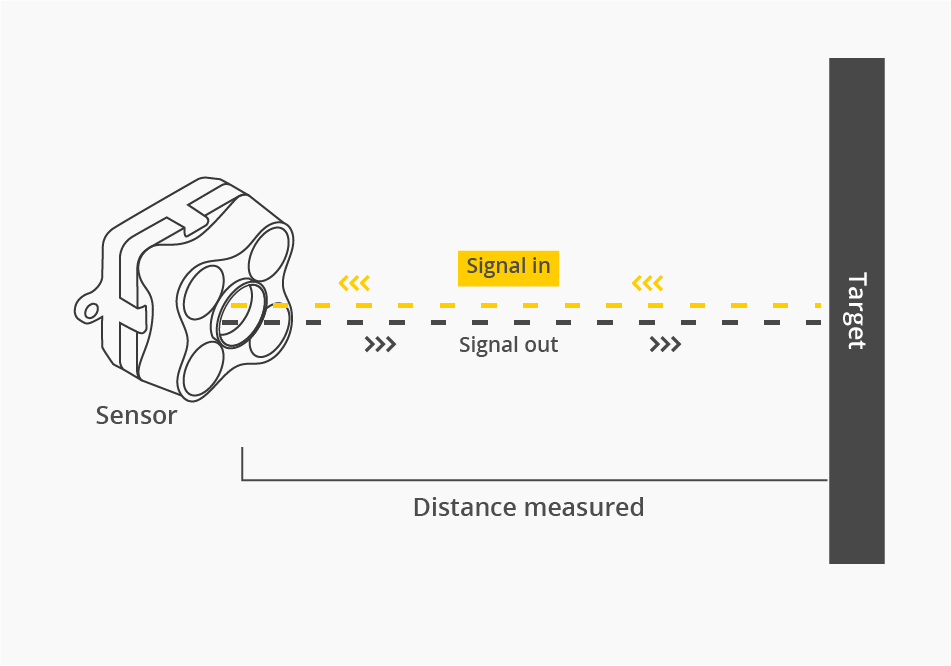Optical Distance Sensors: Principles & Applications

OPTICAL DISTANCE SENSORS EXPLAINED
Many optoelectronic devices are concerned with the absorption/emission of sub-visible ionizing radiation (gamma, X-rays, etc.), but optical distance sensors typically exploit light in the visible and near-visible electromagnetic spectrum. Among the different principles of optical distance sensing, the most common use either a laser or a light-emitting diode (LED) to generate a modulated light beam who's detected reflection by an object is used for distance measurements. These modulated beams are used to calculate distance as a function of the Time-of-Flight (ToF) principle.
While the application principle of laser and LED-based optical distance sensors is similar, the underlying principles of action are fundamentally different.

The term LASER is an acronym for light amplification by stimulated emission of radiation, which defines the process where atoms in lasing materials (crystal, gas, semiconductor, etc.) are excited by an electrical current, or photons, causing them to emit coherent monochromatic light. When used in optical distance sensors, lasers typically provide high reading frequencies and long measuring ranges. However, this performance typically comes with the cost of larger form factors and heavyweight device profiles. Eye safety is also compromised in all but Class 1 laser products.

LEDs function due to the principle of electroluminescence, which refers to the emission of photons due to charge recombination across a P-N semiconductor junction. Modulating the bandgap enables LEDs to be manufactured with functionally monochromatic wavelengths across the ultraviolet, visible, and infrared spectrum. LEDs are more economical than lasers and can be more readily integrated into optical distance sensors with smaller form factors and lightweight devices.
APPLICATIONS OF OPTICAL DISTANCE SENSORS
Both laser and LED ToF optical distance sensors need a direct line of sight to calculate the distance between a sensor and a measured surface (container level, obstacles, etc.). The spatial coherence of laser light provides superior optical properties (low divergence) when it comes to measuring specific points; ideal in long-distance range-finding applications. However, this narrow field of view (FoV) can be detrimental in more dynamic scenarios such as detecting hanging cables, tree branches for applications like indoor navigation and collision avoidance, digital stock monitoring, people counting and analysis, etc.
LEDs offer the widest range of key performance indicators (KPIs) when it comes to indoor distance measurement tasks and applications. They are eye-safe and have a light form factor, making them practical, easy-to-use sensing solutions. Terabee infrared LEDs (IR-LEDs) expand on this with superior refresh rates to alternative products, providing rapid distance information for in-line processing and analysis. This comes in tandem with extremely fast refresh rates, making IR-LED optical distance sensors ideal for fast-moving applications as varied as industrial automation and UAV navigation.
OPTICAL DISTANCE SENSORS FROM TERABEE
Terabee is one of the world’s leading proponents of optical distance sensors based on affordable, ultra-precision IR-LED sensors. All our TeraRanger distance sensors exploit the ToF principle using IR-LEDs to gain rapid and reliable distance information with millimeter resolutions at high speeds.
Thanks for helping to keep our community civil!
This post is an advertisement, or vandalism. It is not useful or relevant to the current topic.
You flagged this as spam. Undo flag.Flag Post


